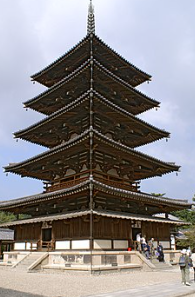Q4 - Indian, Chinese, Japanese, Korean, Thai, Indonesian, and Malaysian Architecture
1/34
There's no tags or description
Looks like no tags are added yet.
Name | Mastery | Learn | Test | Matching | Spaced |
|---|
No study sessions yet.
35 Terms
a. The use of Chofa, a Hindu mythical bird
Describe the finial used at the roof apex and corners of Thai temples, palaces, and royal buildings:
a. The use of Chofa, a Hindu mythical bird
b. The use of kalae or buffalo horns
c. The use of sarimanok as finial
d. The use of Crescent as finial
c. Istana Nural Iman
Identify this South East Asian landmark/ space/ design element
a. The Golden Palace
b. Kamthieng House
c. Istana Nural Iman
d. Pha That Luang
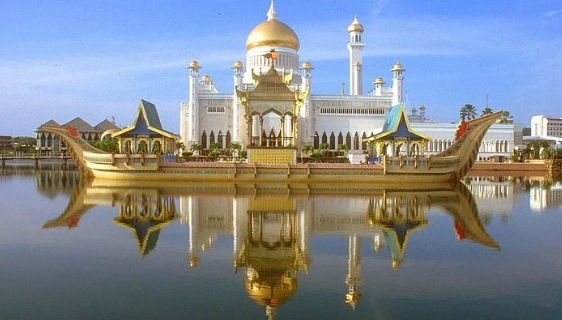
a. Mughal architecture
The Taj Mahal is a prime example of the combination of Persian, Islamic, and Indian art and architecture, resulting in a style known as:
a. Mughal architecture
b. Mudejar architecture
c. Salamanca architecture
d. Moor architecture
c. Marble
Specify the vernacular material used in building the Taj Mahal
a. Imported granite stone
b. Local sandstone
c. Marble
d. Quarry basalt stone
c. The Great Wall of China
This iconic structure streches over 13,000 miles and was built over several dynasties, primarily during the Ming Dynasty (1368-1644). It was originally constructed for defense against invasions and raids.
a. Forbidden City
b. Terra Cotta Army
c. The Great Wall of China
d. Temple of Heaven
c. Japan
Refer to the historical structure and identify its’ country of origin:
a. China
b. Korea
c. Japan
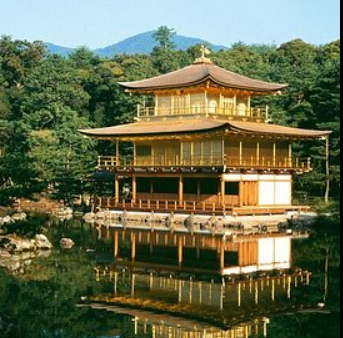
d. Pha That Luang
Identify this South East Asian landmark/ space/ design element
a. The Golden Palace
b. Kamthieng House
c. Istana Nural Iman
d. Pha That Luang
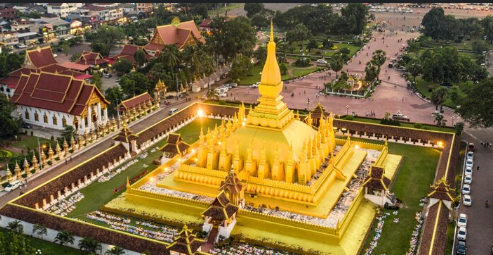
c. Use of the heat from the fireplace/furnace traversing through stone plate channels below the wooden floor
Without electricity, how is a Hanok house heated?
a. Use of fireplace in each habitable room
b. Use of photo voltaic solar cells
c. Use of the heat from the fireplace/furnace traversing through stone plate channels below the wooden floor
d. The use of futon, a floor mattress as bed spread
What is the forked-like roof decoration of the Shinto Shrine?
a. Katsuogi
b. Maunamochi Bashira
c. Tamagaki
d. Chigi
b. Senso-ji
Located in Japan, this is the oldest temple in Tokyo.
a. Horyu-ji
b. Senso-ji
c. Kyoto Imperial Palace
d. Matsumoto Castle
b. Torii
Identify the odd one in the list:
a. Kamthieng
b. Torii
c. Minka
d. Hanok
True
Often a traditional Chinese structure is raised for a number of steps from the natural grade line.
True
False
d. All choices reflect climate-responsive strategies.
How do elements of climate – such as sun, wind, rain, humidity and temperature – influence the design of a traditional Southeast Asian houses?
a. Raised floors protected homes from flooding and promoted air circulation
b. Timber and organic materials regulated indoor temperature and humidity.
c. Large openings allowed for cross ventilation to cool interior spaces.
d. All choices reflect climate-responsive strategies.
c. Anda
What is the name of the half-dome structure of the stupa where the remains of the Buddha are buried?
a. Sopanas
b. Torana
c. Anda
d. Vashti
b. Sultan Salahuddin Abdul Aziz Shah Mosque
What is the largest mosque in Malaysia and the second largest mosque in Southeast Asia?
a. Kaaba
b. Sultan Salahuddin Abdul Aziz Shah Mosque
c. Sulaymaniyah Mosque
d. Hagia Sophia
d. The use of tatami
What traditional Japanese technique is used to measure floor areas using the 0.9 × 1.8 meter unit?
a. The use of tokobashira
b. The use of Toko-gamachi
c. The use of ken
d. The use of tatami
c. The use of dougoung. a complex wood bracket system, allowing pillars to sway
How are traditional Chinese structures designed to be seismic-ready?
a. The use wall screen yingbi to make walls lighter and flexible
b. The use of round river stone as foundation
c. The use of dougoung. a complex wood bracket system, allowing pillars to sway
d. All of the choices are applicable
b. Himeji Castle
Identify this historical structure below which is located in Japan:
a. Nijo Castle
b. Himeji Castle
c. Horyu-ji
d. Todai-ji
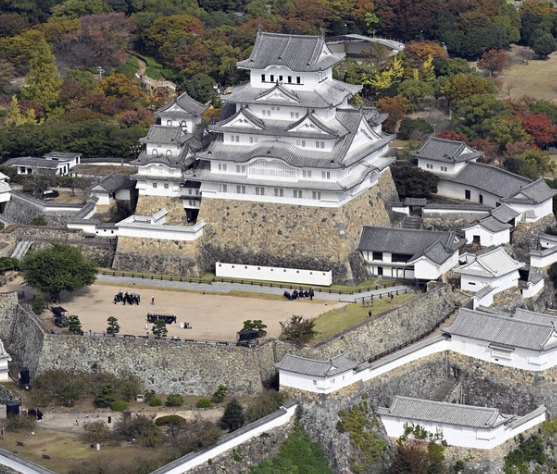
c. Dougoung
This bracket found in the post and beam connection for seismic use in Chinese temple/palace structures called:
a. Chuandou
b. Tailiang
c. Dougoung
d. Tokyo
a. Nijo Castle
Identify this historical structure below which is located in Japan:
a. Nijo Castle
b. Himeji Castle
c. Horyu-ji
d. Todai-ji
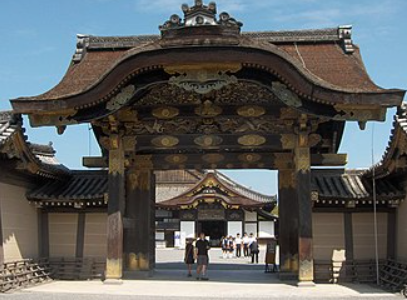
d. Onigawara
What is the beast-like tile ornament found at the end of a Japanese Buddhist temple roof ridge that is meant to ward off evil spirits?
a. Tokonoma
b. Fusuma
c. Tamagaki
d. Onigawara
d. They are gateways separating the sacred to the earthly world
What is the common function shared by the pailu, torona, torii, ang hongsalmun?
a. They are fences protecting the privacy of the temple
b. They are stone boundaries to separate sacred spaces
c. They are landmarks where the gods descended on earth
d. They are gateways separating the sacred to the earthly world
b. Korea
Refer to the historical structure and identify its’ country of origin
a. China
b. Korea
c. Japan
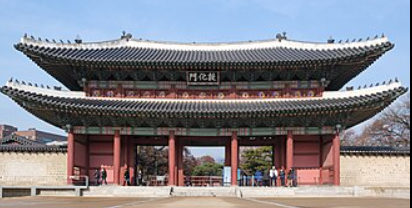
b. Wenshou
What are the zoomorphic figures found along the roof ridge of Imperial Chinese structures?
a. Dougoung
b. Wenshou
c. Tai
d. Toulou
a. Chofa
This refers to a decorative finial of Thai roof representing a fierce bird of Hindu origin:
a. Chofa
b. Sorin
c. Garuda
d. Kalae
d. Gopuram
What is a monumental, usually ornate gateway tower to a Hindu temple enclosure especially found in Southern India?
a. Garbhagriha
b. Stambha
c. Mandapa
d. Gopuram
d. Large stucco Buddha
Wat Si Sum Temple, in Thailand, is famous for its’ _______:
a. Gold leaf glided Buddha
b. None among the choices
c. Emerald Buddha
d. Large stucco Buddha
b. Kamthieng House
Identify this South East Asian landmark/ space/ design element
a. The Golden Palace
b. Kamthieng House
c. Istana Nural Iman
d. Pha That Luan
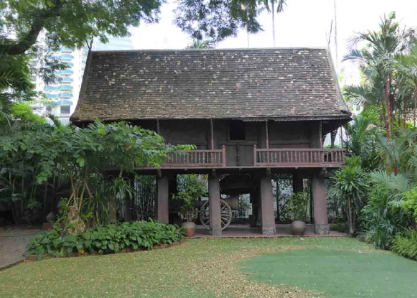
a. Sweeping multi-tiered gable rooflines
Characterize the distinctive features of Thai roof architecture:
a. Sweeping multi-tiered gable rooflines
b. Dutch roof
c. Mansard roof
d. Combination of gable and hip roof
a. Rumah ibu
What is the main living area of a typical Malaysian traditional house?
a. Rumah ibu
b. Rumah lamin
c. Lapong
d. Rumah gaddang
c. Temples-Palaces-Houses
Most of the traditional and historical structures in China or orften:
a. Shrines-Houses-Churches
b. Palaces-Government Centers-Greens and landscape
c. Temples-Palaces-Houses
d. Palaces-Churces-Schools
c. Sanmon
What is the gateway of the Japanese Buddhist Temple?
a. Torii
b. Tokyo
c. Sanmon
d. Pailu
b. None among the choices
Located in Korea, This is the oldest royal Confucian shrine preserved.
a. Hwaseong Fortress
b. None among the choices
c. Seokguram Grotto
d. Changdeokgung Palace
c. India
Refer to this historical structure and identify its’ country origin:
a. Cambodia
b. Nepal
c. India
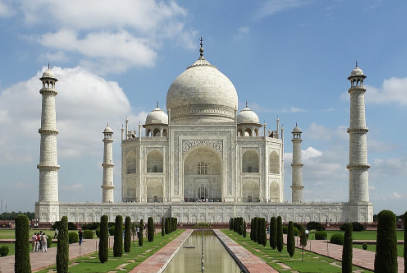
e. Japanese Pagoda
Identify this japanese landmark/ space/ design element
a. Ofuro
b. Chubadai
c. Kotatsu
d. Shoji
e. Japanese Pagoda
